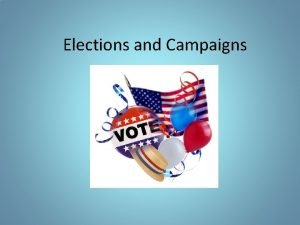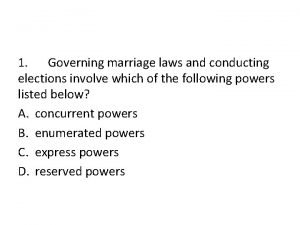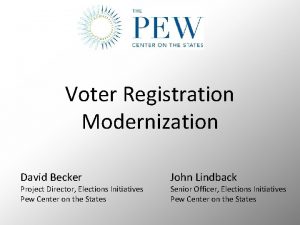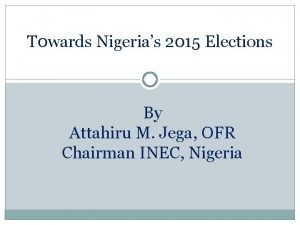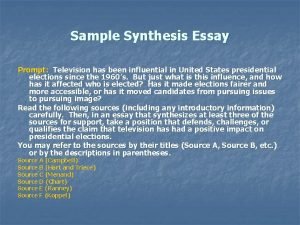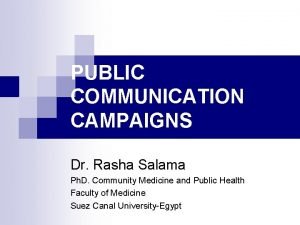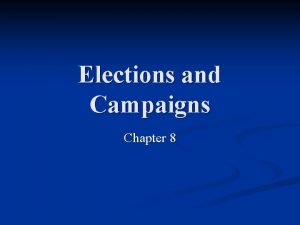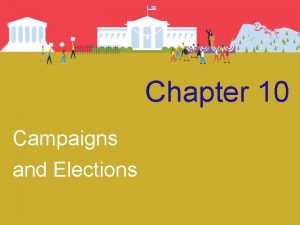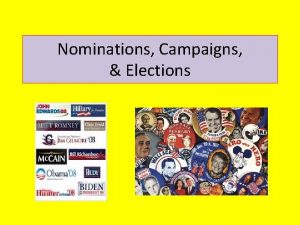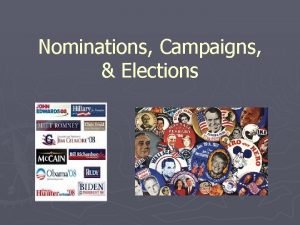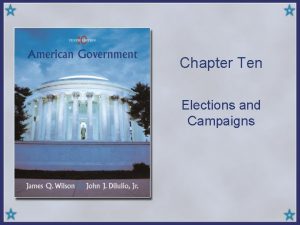Campaigns and Elections Chapter 10 CHAPTER 10 CAMPAIGNS








- Slides: 8

Campaigns and Elections Chapter 10 CHAPTER 10: CAMPAIGNS AND ELECTIONS

In this chapter you will: • What is unique (and what is not) about American elections. • To ask how democratic American elections are today. • To discuss the influence of money in elections. • To explore presidential and congressional campaigns. • To identify the keys to a successful campaign for Congress. • To consider election reforms. CHAPTER 10: CAMPAIGNS AND ELECTIONS

How Democratic are American Elections? • Are American elections truly democratic? Americans vote more often and for more offices than the citizens of most other democracies. • The most familiar question today focuses on the role of money in election campaigns. PACs, super PACs, and 527 s have become fixtures in national elections. Recent court decisions have significantly expanded the ability of wealthy donors and outside groups to contribute large sums. CHAPTER 10: CAMPAIGNS AND ELECTIONS

Presidential Campaigns and Elections • Presidential elections, despite their grueling intensity and duration, attract many aspirants every four years. • Nearly all serious candidates for the presidency are experienced politicians. No candidate without any experience in the public sector has ever won the presidency—until Donald Trump. CHAPTER 10: CAMPAIGNS AND ELECTIONS

Presidential Campaigns and Elections • The three phases of the campaign—the nominating process, party conventions, and the general election —require different political strategies. • Election outcomes are influenced by many factors: the economy, wars, organization, party loyalty, demographics, and the Electoral College. Add the role of accident and luck, and election outcomes are often difficult to predict. CHAPTER 10: CAMPAIGNS AND ELECTIONS

Congressional Elections • Every two years, all 435 House seats and a third of the Senate seats are up for election. • Very few restrictions govern who may run. • House and Senate incumbents have powerful built-in advantages when running for reelection. • The president’s party generally loses House and Senate seats during the next midterm elections. CHAPTER 10: CAMPAIGNS AND ELECTIONS

Congressional Elections • The president’s party generally loses House and Senate seats during the next midterm elections. • Decennial redistricting of House seats can result in some strangely shaped—and politically motivated—districts, known as gerrymanders. • Both parties gerrymander. In 2010, Republican control over state legislatures led to election districts that gave the Republicans an advantage in the House of Representatives. CHAPTER 10: CAMPAIGNS AND ELECTIONS

Congressional Campaigns • To run successfully for Congress, follow a few vital steps: raise sufficient funds (and then raise more), organize a talented team, develop a strategy that plays to your strengths, and hone your message. • If you win, you become a freshman. Well done! Now, start running – your reelection campaign has begun. CHAPTER 10: CAMPAIGNS AND ELECTIONS
 Presidential elections exploration and announcement
Presidential elections exploration and announcement Governing marriage laws and conducting elections involve
Governing marriage laws and conducting elections involve African charter on democracy, elections and governance
African charter on democracy, elections and governance Stalin promise free elections
Stalin promise free elections David becker elections
David becker elections Conclusion on elections
Conclusion on elections Ap lang synthesis essay television presidential elections
Ap lang synthesis essay television presidential elections “elections are key to democracy”
“elections are key to democracy” Behavior change campaign
Behavior change campaign
